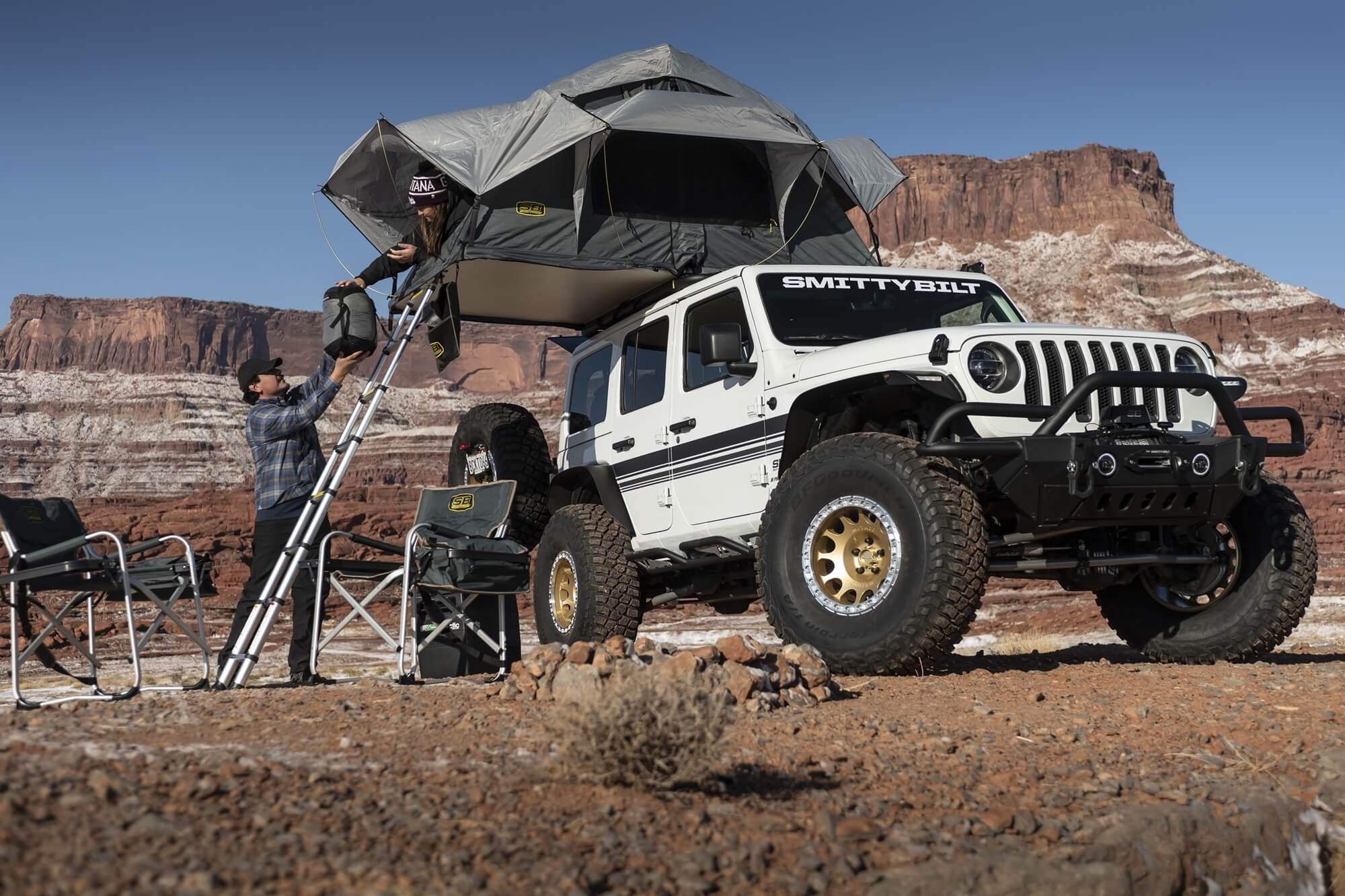
One of the coolest parts of camping is that there are various ways to do it. Whether you want to camp on the roof of your car to be closer to those sky views or enjoy a traditional tent that puts you close to a stream or creek, you’ve got options. Depending on the camping experience you’re searching for, you may prefer a hard shell roof top tent or a traditional overlanding tent might make more sense.
If you’re trying to decide between taking your camping experience aerial or staying closer to the ground, we have some tips to help you make the best decision for your travels.
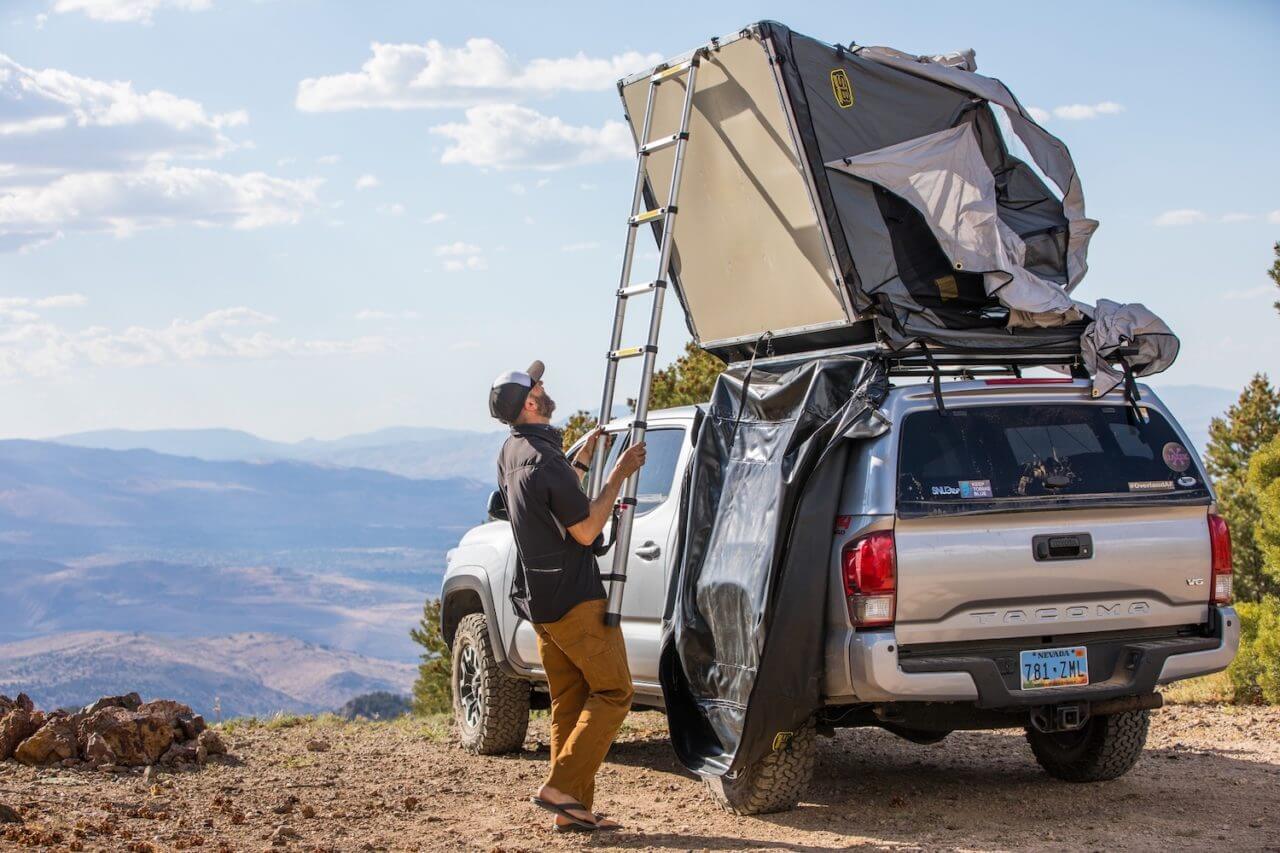
The Different Types of Tents for Camping
For this article, the primary differentiation for tent types is where they are located and installed. For this reason, we’ll stick to two main types: roof top tents and traditional overlanding tents. Roof top tents are as their name suggests. They are tents that are installed on top of your vehicle’s roof. SUVs are a common type of vehicle for this roof type.
Roof top types can come in soft and hard shell roof top tents. The former is typically made of canvas or nylon and can be folded. They usually hang off the side of the vehicle. Hard shell roof top tents can look like a box. The box can then open up into a tent, where the top is made of a rigid material like aluminum or plastic. The sides are usually fabric.
Alternatively, traditional overlanding tents can come in various types and sizes. These tents are located on the ground and are made of fabric. Some common examples of traditional tents include:
- Backpacking – These are narrow tents that can typically fit one-to-two people. They are made for portability and are easy to set up and take down.
- Tunnel – These are larger tents, typically made for families. They are heavier and are shaped like tunnels to allow for more space.
- Dome – These tents have a spherical shape, offer easy set-up, and are made for multiple people to stay in them.
Both roof top and traditional tents offer advantages to individuals, but they can also come with some challenges.
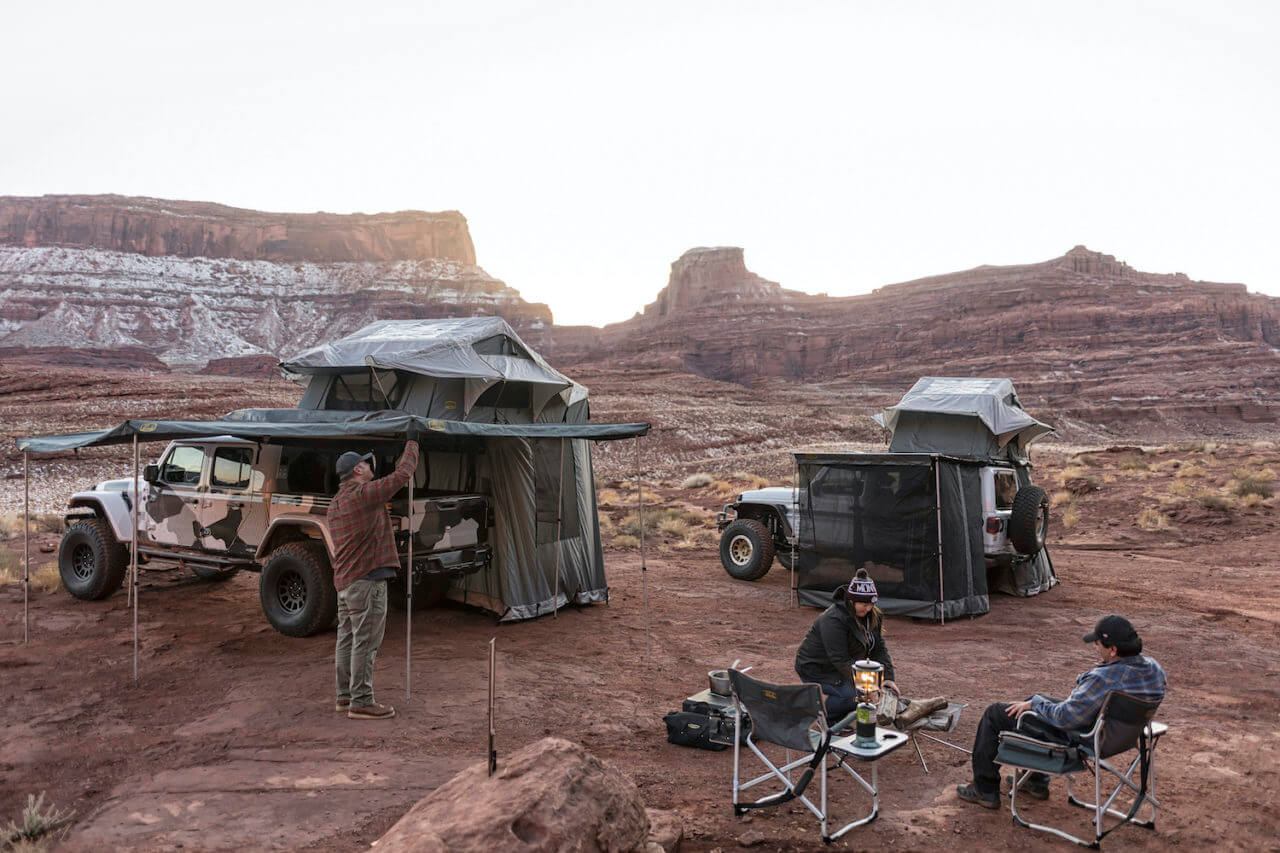
Pros & Cons of Roof Top Tents
Roof top tents can make your camping situation easier, but you may find that some of the cons they come with don’t work for your camping preferences:
Pros
- Increased protection from the elements – If you invest in a hard shell roof top tent, you can get extra protection from more intense weather conditions like snow, rain, or hail.
- Avoid the critters and larger animals – Being lower to the ground means that you’ll likely have to manage the wildlife in the area, whether it be snakes or a larger animal like a bear.
- Get better airflow – Being higher off the ground can make getting better ventilation into your tent easier.
- Enjoy clearer views – Locating on top of your SUV puts you closer to those starry views at night. It also gives you a better lay of the land if you want to monitor what’s around you closely.
- There is likely less to clean – Unlike that ground tent you step right into from the outside, roof top tents require you to trek the ladder first. This lets you wipe your feet off, diminishing the dirt you’re tracking into your tent.
Cons
- They’re more expensive – Roof top tents are typically more expensive than their traditional overlanding tent counterpart. If you have a budget in mind, these might not be on your list.
- They come with less room – Even if you use a roof top tent trailer, these tents typically offer less space than a ground tent.
- You need a ladder to get into it – To access a roof top tent, you’ll need to use a ladder. This can be taxing if you do not like climbing in and out of spaces. This can also be a problem if you or anyone traveling with you has mobility issues.
- Can decrease fuel efficiency – A roof top tent can cause drag, increasing the fuel you need to drive.
- Can impact your car’s suspension – This is particularly true for hard shell roof tops. These tents are typically heavier, which can put more weight on your suspension system. It could also cause handling problems.
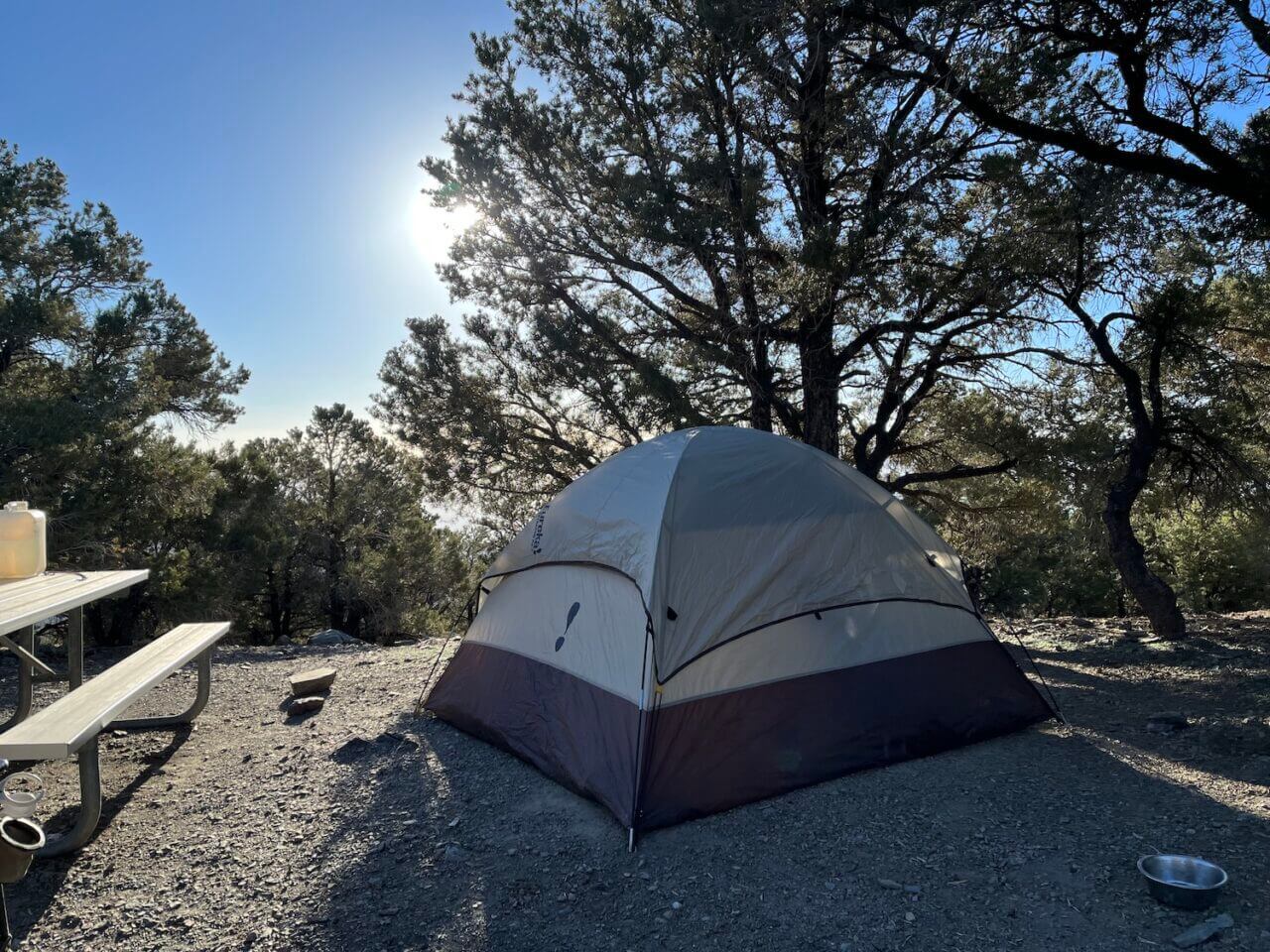
Pros & Cons of Overland Tents
Being closer to the ground with a traditional overlanding tent has its benefits. However, there are some things to watch out for as well.
Pros
- Can camp in places cars cannot get to – Larger vehicles may only sometimes be able to access certain camping areas. Having a portable traditional overlanding tent can make it easier to get into specific locations.
- Comes in many types – Roof top tents are relatively limited in the styles they offer because of their location on the top of the truck or SUV. However, traditional tents come in many types, whether ridge or geodesic, to fit your preferences.
- You’ll have more space – Typically, traditional overlanding tents offer more space, which is especially helpful if you have larger groups.
- Easier to get in and out of – Unlike roof top tents that require climbing a ladder, you’ll only need to step in and out of a ground tent.
- They are likely less expensive – Depending on the type of tent you’re looking for, a ground tent can cost less than $50. There are more expensive options, but you have more choices to find one that fits your budget.
Cons
- Harder to keep clean – Since you’re located on the ground, you’ll likely be tracking in some dirt and moisture. These tents are a lot harder to keep tidy because of it.
- They are less stable – Because they’re made of fabric, these tents are less stable than hard shell roof top tents. So they may be more likely to be impacted by severe weather.
- Takes more time to find somewhere to put it – You’ll always have a place to put your roof top tent if you have your car. Alternatively, you’ll need to find ground that is suitable to place your tent, which can take a lot of time.
- Can be less safe – Being closer to the ground puts you at a greater risk of encountering threats large and small. Whether a mountain lion is nearby or ticks enter your tent, elevation can offer more protection from these things.
- Bumpier sleeping arrangement – Unlike a roof top tent, you won’t be sleeping on a flat surface. Sleeping in a traditional overlanding tent exposes you to the natural terrain. You might be on top of rocks or uneven ground, making sleeping hard.
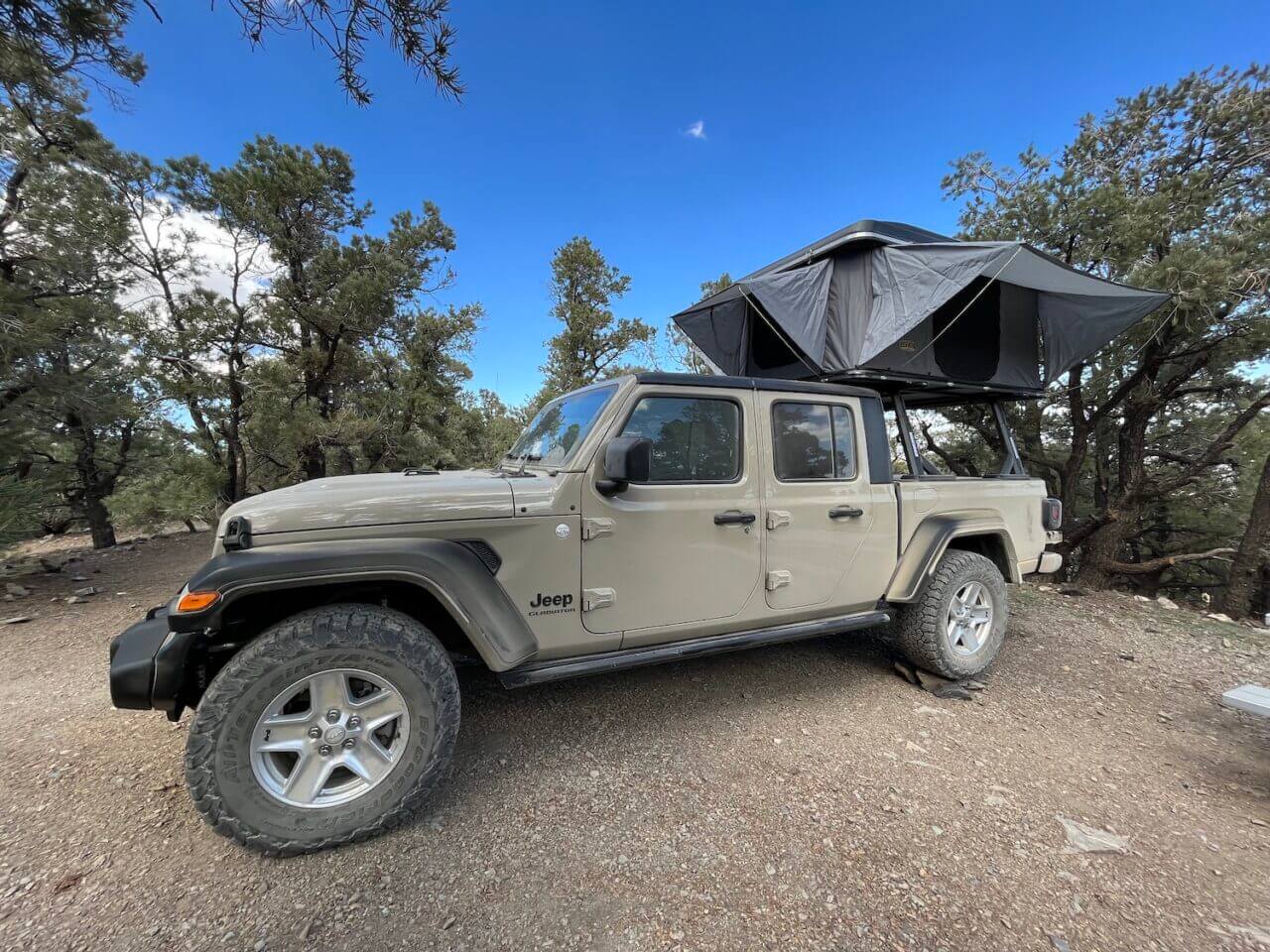
Tent for Your Individual Preferences
Whether you’re looking to be closer to the stars with a roof top tent trailer or closer to the ground with a traditional overlanding tent, you can have the camping experience you prefer. The type of tent you’ll select will depend on what works best for you.
Consider the pros and cons and see what fits your needs. Whether you choose a traditional overlanding tent or a roof top tent, our team can help you find what you want. Check out the 4 Wheel Parts inventory for even more selections.



2